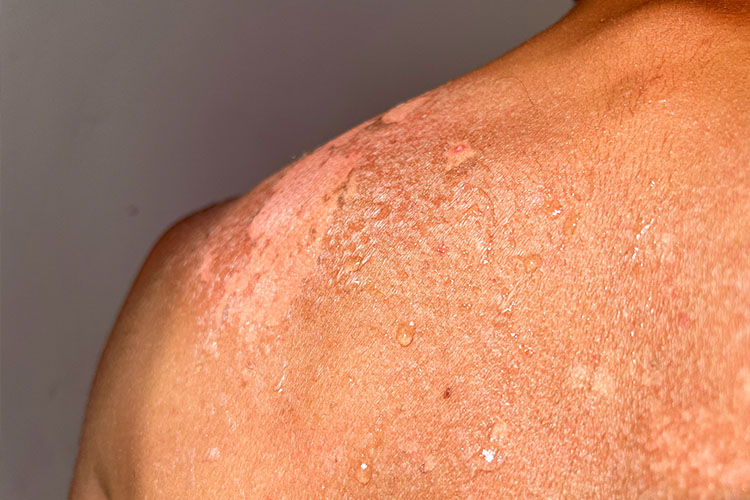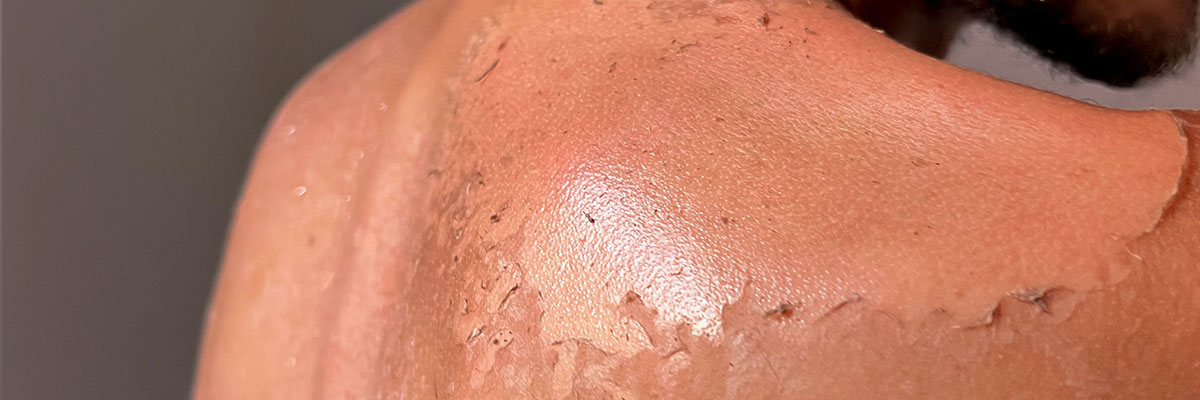Overview
Sunburn is a skin injury caused by excessive exposure to ultraviolet (UV) rays from the sun or artificial sources, such as tanning beds. It results in redness, pain, swelling, and, in severe cases, blistering and peeling of the skin. Beyond the immediate discomfort, repeated sunburns can increase the risk of skin damage, premature aging, and skin cancer. Prompt and effective treatment of sunburn can help alleviate symptoms and protect the skin from further damage.
The primary goal of sunburn treatment is to soothe the skin, reduce inflammation, and promote healing. Common treatments include cool compresses, aloe vera gel, and over-the-counter anti-inflammatory medications like ibuprofen. These remedies help to relieve pain and swelling, providing comfort as the skin recovers. Hydration is also essential, as sunburn draws moisture away from the skin, increasing the risk of dehydration.
In cases of severe sunburn with extensive blistering or signs of infection, medical intervention may be necessary. Preventive measures, such as wearing sunscreen, seeking shade, and wearing protective clothing, are essential to avoid sunburn in the future. By combining immediate treatment with long-term protective habits, individuals can manage sunburn effectively and reduce the risk of lasting skin damage.
Table of Contents
When to See a Doctor
Knowing when to seek medical attention for sunburn is important, especially if symptoms are severe. While mild sunburns can typically be managed at home, more serious cases may require professional care to prevent complications and promote healing.

Signs to see a doctor:
- Severe blistering over a large area. Extensive blistering may indicate a deep burn that requires medical treatment to prevent infection and promote proper healing.
- High fever, chills, or confusion. These symptoms suggest heat-related illness or sun poisoning, which can accompany severe sunburn and should be addressed immediately.
- Signs of infection. If the sunburned skin develops yellow pus, swelling, increased redness, or a foul odor, it could be infected and may need antibiotics.
- Persistent pain or swelling. If pain or swelling does not improve with home care or becomes worse, it may be a sign that the burn is more severe than initially thought.
Seeking medical care in these cases can help prevent complications and ensure appropriate treatment for more serious sunburns.
What Type of Doctor to Seek
For sunburn concerns, a primary care physician can provide initial assessment and treatment. If the burn is severe or shows signs of infection, a dermatologist may be consulted to manage the condition and recommend specialized care.
What to Expect from Your Visit to a Doctor
During a visit, the doctor will assess the extent of the burn and may clean the affected area if blisters have formed. Pain management, hydration, and topical or oral antibiotics may be prescribed to prevent infection and alleviate discomfort. The doctor may also provide guidance on skin care and preventive measures for future sun exposure.
Prompt consultation for serious sunburn cases can help manage symptoms effectively and reduce the risk of skin complications.
Sunburn Treatment Options

There are several remedies to help relieve the effects of sunburn, such as skin redness and pain. Here are some simple steps for treating sunburn at home:
- Apply a cold compress or rinse with cool water. Use a towel soaked in cold water or gently run cool water over the sunburned skin to reduce pain and heat.
- Apply a soothing gel or ointment. Choose products specifically formulated for sunburn relief, typically containing menthol, camphor, or aloe vera extract. These ingredients help cool and soothe irritated skin.
- Take anti-inflammatory medication. If the skin is swollen due to severe sunburn, taking over-the-counter anti-inflammatory medications like ibuprofen or naproxen can help reduce pain and swelling.
- Stay hydrated. Drinking plenty of water helps replenish the moisture lost from the skin due to sun exposure and supports the body’s healing process.
- Avoid further sun exposure. Until the sunburned skin has fully healed, it’s crucial to stay out of direct sunlight to prevent further damage and irritation.
In most cases, sunburn can be managed effectively at home. However, in severe cases, especially if complications arise or symptoms worsen, it may be necessary to seek medical attention. Consulting a dermatologist is recommended for specialized care and guidance, particularly for more intense or complicated sunburn cases.
Sunburn Prognosis
The prognosis for sunburn is generally positive, with most cases healing on their own within a few days to a week. Mild sunburns typically resolve without lasting effects, especially when treated promptly with home remedies to alleviate discomfort and support healing. Redness, pain, and swelling usually subside within a few days, followed by peeling as the damaged skin sheds.
In cases of severe sunburn, recovery may take longer, and there is a higher risk of complications such as skin infections or prolonged pain. Repeated severe sunburns, especially over time, increase the risk of long-term damage, including premature skin aging, sunspots, and an elevated risk of skin cancer.
With appropriate treatment and preventive measures, individuals can minimize sunburn’s immediate effects and reduce the risk of future complications. Consistent use of sunscreen, protective clothing, and limiting sun exposure are essential practices to protect skin health and prevent further sun damage.


